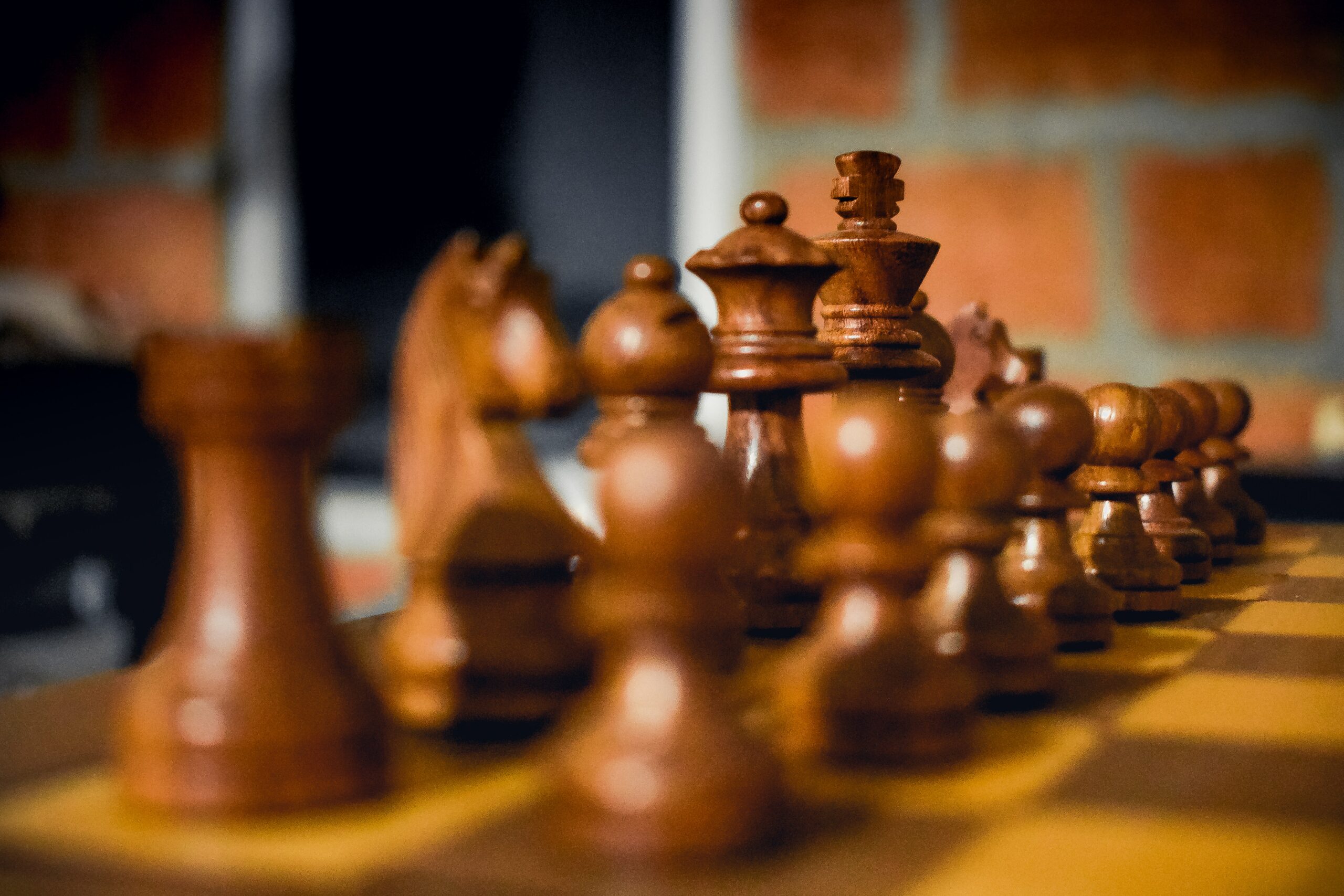Chess, an ancient and intellectually stimulating board game, has captivated minds for centuries with its complex strategies and infinite possibilities. As players immerse themselves in the chessboard’s 64 squares and 32 pieces, they engage in a battle of wits, attempting to outmaneuver and ultimately checkmate their opponent’s king.
But have you ever wondered just how many moves are possible in a game of chess? The answer to this seemingly simple question unveils a world of mind-boggling complexity and a vast array of potential combinations. In this exploration, we will delve into the astonishing scope of chess moves, uncovering the mind-bending figures that shed light on the game’s boundless nature.
From its humble beginnings to the modern era, chess continues to be a source of endless fascination, where strategic thinking and creativity collide within a tapestry of countless moves. So, let us embark on a journey into the remarkable realm of chess, where the possibilities are as vast as the imagination itself.
How Many Possible Moves Exist in Chess?
Chess, with its intricate rules and strategic depth, offers players an astounding number of possible moves. The exact count of all possible moves in chess is a mind-boggling figure. In fact, it is estimated that the total number of unique legal moves in chess exceeds 10^120. This astronomical number showcases the immense complexity of the game and highlights the multitude of choices available to players on each turn.
What Factors Contribute to the Total Number of Moves?
Several factors contribute to the vast number of moves in chess. Firstly, the number of pieces on the board plays a crucial role. With 32 pieces at the start of the game, including 16 pawns and 6 different types of pieces for each player, the combinations and interactions between them generate numerous potential moves. Additionally, the position and mobility of the pieces, along with the rules governing their movement, further expand the range of possible moves.

Can the Number of Chess Moves Be Calculated Exactly?
Given the incredibly large number of possible moves in chess, it is practically impossible to calculate the exact total. The game’s branching factor—the average number of legal moves available at any given position—is typically around 35.
With each move, the number of possibilities multiplies, rapidly reaching astronomical proportions. Therefore, an exact calculation of all chess moves is beyond the capabilities of current technology and human comprehension.
Are All Chess Moves Equally Valid and Meaningful?
While all legal moves in chess are permissible within the rules, they are not all equally valid or meaningful. The quality of a move depends on the strategic goals, tactical considerations, and evaluation of the resulting position.
Players must analyze the potential consequences of their moves, weigh different options, and select moves that align with their overall game plan. The concept of move quality is central to chess, with some moves leading to advantageous positions, while others may result in a disadvantage or missed opportunities.

How Does the Number of Moves Impact Gameplay Strategies?
The vast number of possible moves in chess profoundly impact gameplay strategies. It necessitates careful calculation, forward-thinking, and the ability to anticipate various lines of play.
Players must consider the consequences of their moves not only in the immediate present but also in the subsequent moves and resulting positions. The multitude of choices demands strategic planning, the ability to recognize patterns, and the capacity to adapt to the ever-evolving dynamics of the game.
Are There Patterns or Principles to Limit the Number of Moves?
Although the number of possible moves in chess is immense, certain patterns and principles can help limit the options and guide decision-making. Chess players rely on established opening principles, middlegame strategies, and endgame techniques to narrow down their choices and focus on relevant moves.
Tactics such as pins, forks, and discovered attacks can force opponents into a limited set of viable moves. Additionally, positional understanding, pawn structures, and piece coordination can help players streamline their decision-making process and prioritize moves that align with their overall plan. By leveraging these patterns and principles, players can effectively navigate the complex chess landscape while managing the overwhelming number of potential moves.
What Is the Role of Chess Openings in Reducing the Number of Moves?
Chess openings serve a crucial role in reducing the number of moves that players have to consider at the start of a game. Openings are established sequences of moves that have been extensively studied and analyzed over the years.
By following established opening principles and known variations, players can make informed moves based on strategic considerations rather than having to evaluate all possible moves from the very beginning. The opening theory provides a framework that narrows down the decision space, allowing players to focus on a subset of moves that have been proven to be effective in certain positions.
How Do Chess Players Navigate the Huge Decision Space?
Given the vast number of potential moves in chess, players employ various techniques to navigate the enormous decision space. Experienced players rely on their understanding of chess principles, tactical awareness, and strategic thinking to narrow down their options.
They evaluate the position, consider the strengths and weaknesses of their pieces, and formulate a plan based on their analysis. By focusing on critical areas of the board and key positional factors, players can make informed decisions that limit the number of moves they need to evaluate in a given position.
| Category | Information | Example |
|---|---|---|
| Possible Moves | There are approximately 20 possible moves at the start of a chess game. | 1. e4, 1. d4, 1. Nf3, etc. |
| Influencing Factors | The number of moves is influenced by the number of pieces on the board, legal positions, and constraints. | Number of pieces: 32 |
| Game Complexity | A higher number of moves leads to increased complexity and more possibilities for both players. | Complexity increases with each move. |
| Limitations | There are no inherent limitations on the number of moves per turn, but certain rules restrict some actions. | No limitation on moves, but castling only allowed under specific conditions. |
| Longest Game | The longest-recorded game had 269 moves, lasting over 20 hours. | I. Nikolic vs. A. Arsovic (1989) |
Can Computers Calculate All Possible Chess Moves?
While computers possess immense computational power, calculating all possible chess moves is still beyond their capabilities. The sheer magnitude of the chess game tree, which represents all possible move sequences, makes it practically impossible to exhaustively search every variation. However, computer chess engines leverage algorithms, heuristics, and artificial intelligence techniques to evaluate and prioritize moves efficiently.
They employ sophisticated search algorithms, such as alpha-beta pruning and Monte Carlo methods, to explore the most promising branches of the game tree and make informed decisions based on position evaluation and strategic considerations.
How Many Moves Are Considered in Professional Chess Matches?
In professional chess matches, players typically consider a limited number of moves for each position. Due to the time constraints imposed by tournament regulations, players must make their moves within a specified time limit.
As a result, they must prioritize and carefully evaluate a subset of moves that appear most promising. Professional players often rely on their intuition, deep positional understanding, and calculation abilities to select moves efficiently. They aim to make moves that maintain a balance between accuracy and time management, as each move can significantly impact the course of the game.

Does the Number of Moves Affect the Duration of Chess Games?
The number of moves in a chess game can have a significant impact on its duration. In the opening phase, where players have limited moves to choose from due to established opening theory, games tend to progress more quickly.
As the game transitions into the middlegame and endgame, the number of available moves increases, and players must carefully analyze the consequences of each move. This often leads to more contemplation and longer time consumption, especially in critical positions or complex tactical situations. The duration of a chess game can vary widely depending on factors such as the player’s skill level, time control, and the complexity of the position.
Are There Infinitely Many Possible Chess Games?
While the number of possible chess games is incredibly vast, it is not infinite. The game of chess is played on a finite board with a fixed number of squares, and each piece has specific movement rules. Therefore, the total number of potential chess games, although astronomically large, is finite.
However, the number is so vast that it exceeds the estimated number of atoms in the observable universe. This extraordinary number illustrates the boundless creative possibilities and depth of the game, as each game can unfold in unique ways, offering endless combinations of moves, positions, and strategies.
What Are the Implications of the Vastness of Chess Moves on Learning?
The vastness of chess moves presents both challenges and opportunities for learning the game. On one hand, the sheer number of possibilities can be overwhelming, especially for beginners. It requires time, patience, and dedication to explore and understand the intricacies of different move combinations. However, this vastness also provides a rich learning environment.
By engaging with the multitude of moves, players can develop their analytical skills, pattern recognition abilities, and decision-making processes. Exploring different moves and studying game examples can deepen one’s understanding of chess principles and strategies, leading to gradual improvement and growth as a player.
Can Analyzing Chess Moves Improve Strategic Thinking Skills?
Analyzing chess moves is an excellent exercise for improving strategic thinking skills. Chess requires players to think ahead, anticipate their opponent’s moves, and formulate long-term plans. By analyzing different move options and their potential consequences, players cultivate the ability to evaluate trade-offs, assess risks, and consider the broader implications of their decisions.
Chess encourages strategic thinking by emphasizing the importance of positional understanding, tactical awareness, and adapting to changing circumstances. Regular analysis of chess moves enhances critical thinking, pattern recognition, and the ability to devise effective strategies not only within the game but also in various real-life contexts.
How to Embrace the Complexity of Chess and Enjoy the Journey?
Embracing the complexity of chess is key to enjoying the journey and fully immersing oneself in the game. Rather than being overwhelmed by the vast number of moves and possibilities, it is important to approach chess with a sense of curiosity, openness, and a willingness to learn. Start by focusing on the fundamental principles of chess, such as piece development, pawn structure, and king safety.
Gradually expand your knowledge and explore different openings, middlegame plans, and endgame techniques. Engage in regular practice, play against opponents of varying skill levels, and analyze your games to identify areas for improvement. Remember that chess is a lifelong learning process, and every game is an opportunity to grow, learn, and appreciate the beauty of this ancient game. Enjoy the process, celebrate small victories, and embrace the challenges as stepping stones to becoming a better player.
Conclusion
In conclusion, the question of how many moves are possible in a game of chess leads us into a realm of unfathomable complexity. The sheer number of potential moves and their intricate combinations is staggering, surpassing the imagination’s bounds. From the initial move to the endgame, chess presents an ever-evolving puzzle where strategy, calculation, and creativity intertwine.
The beauty of chess lies not only in its simplicity of rules but also in the depths of its possibilities, allowing players to explore a universe of moves that challenge and inspire. While it is impossible to calculate the exact number of chess moves due to the game’s vastness, the rough estimate of 10^120 potential positions serves as a testament to its unparalleled complexity.
As chess enthusiasts continue to study and master this timeless game, they unravel its secrets and uncover new layers of strategic brilliance. So, whether you’re a novice or a seasoned player, remember that each move you make contributes to the immense tapestry of possibilities that make chess a truly remarkable intellectual pursuit.




